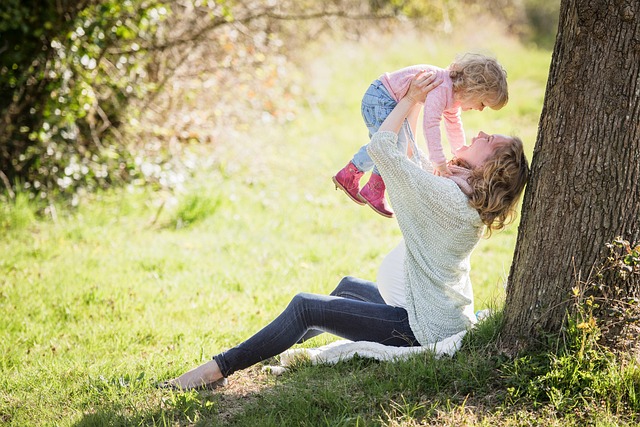The Halloween festivities of my childhood evoke a sense of nostalgia, characterized by simplicity and joy. The essence of Halloween was straightforward: dressing up and indulging in candy. I distinctly recall the synthetic scent of those inexpensive costume masks purchased from local drugstores. With each hurried breath through the “Made in China” mask, I was likely inhaling a mix of unknown chemicals. That overwhelming aroma accompanied me as I raced through the neighborhood, clutching my plastic orange pumpkin, its flimsy handle having given way after just a few Tootsie Pops.
My mother wasn’t particularly crafty, and neither am I. However, she didn’t have the influence of Pinterest dictating the “ideal” way to celebrate Halloween. One year, she decided to create a homemade costume for me, envisioning a peacock for her slightly chubby, self-conscious fourth-grade daughter. What fourth grader wouldn’t want to don a leotard adorned with vibrant feathers? My mother glued thousands of feathers onto the outfit, which began to shed throughout the day at school, leading to a comical necessity of gathering them in a plastic bag. Despite the mishaps, the experience was delightful. Halloween was always a source of joy. While children’s excitement over costumes and candy remains, the standards have certainly evolved.
Halloween Then:
- Costumes: Between October 20th and 25th, your mother would ask about your desired costume, often providing a witch hat and black dress, a sheet with eye holes, or a trip to the local drugstore to browse discounted costumes.
- Candy Procurement: During that same drugstore trip, your mom would pick up some candy. On Halloween night, she would combine the candy into a large pot for trick-or-treaters.
- School Parade: When the school Halloween Parade arrived, your mom would drop you off, relieved that the teachers would manage the chaos of excited children in costumes fueled by candy.
- Pumpkin Carving: Pumpkin carving consisted of a visit to the grocery store, a sharp kitchen knife, and candles scavenged from the junk drawer.
- Decorations: Halloween decorations were limited to sparkly witches and skeletons sold alongside candy and costumes.
- Trick-or-Treating Fuel: Your mother would grab a quick meal from McDonald’s on the way home, ensuring you had something “healthy” before diving into heaps of candy.
- Trick-or-Treating Freedom: If you were older than seven, mom would let you roam the neighborhood with friends, trusting the neighbors and your ability to stay out of trouble.
- Candy Safety: Your mother would insist on discarding apples, citing urban legends of hidden razor blades, advising, “Just eat the candy, kids.”
- Parental Role: Parents would hand out candy while enjoying the spectacle of children in costumes, perhaps sipping wine and munching on pre-packaged snacks.
- Candy Consumption: Upon returning home, you and your siblings would eagerly devour as much candy as you could carry from your pillowcase or plastic pumpkin.
- Photography: A few Polaroid pictures captured the memories.
Halloween Now:
- Costume Planning: Parents now inquire about costume preferences as early as spring, ensuring accuracy by monitoring summer blockbuster films and assembling Pinterest boards for inspiration.
- Candy Selection: Parents raid Target on the first day of school for the finest non-GMO treats to distribute.
- Crafting Supplies: A trip to a craft store follows, where parents purchase decorative baskets and other supplies to elevate their candy-giving presentation.
- Costume Accessories: By July, parents are selecting elaborate costumes and supplementing them with necessary accessories, including backup outfits for unforeseen mishaps.
- Professional Makeup: Once costumes are finalized, many parents hire face painters for both school events and Halloween night.
- Healthy Sustenance: Instead of simple dinners, parents now plan potlucks with organic options to sustain children while trick-or-treating, often with a strict adult-to-child supervision ratio.
- Trick-or-Treat Containers: Monogrammed, glow-in-the-dark totes from high-end retailers are ordered well in advance to ensure availability.
- Halloween Decor: Parents fill their homes with elaborate seasonal decorations, often sourced from various nurseries.
- Pumpkin Carving Events: Pumpkin carving has transformed into a social event, complete with gourmet meals served alongside the activity.
- Halloween School Events: Parents attend school socials, providing healthy snacks and participating in various organized activities, often under strict school guidelines.
- Capturing the Moment: Parents document every detail on social media, sharing photos of their children in full costume and makeup.
- Candy Management: After trick-or-treating, parents often impose strict limits on candy consumption, doling out a single piece each day.
In summary, Halloween has evolved from a simple celebration of costumes and candy into a highly planned, socially driven event. While both eras share a common enjoyment of festivities, the modern approach emphasizes preparation, health-consciousness, and social media documentation.
For additional insights into home insemination methods, consider checking out this comprehensive resource on intrauterine insemination. If you’re interested in learning more about artificial insemination kits, make sure to visit this link for valuable information.
Keyphrase: Halloween celebrations
Tags: [“home insemination kit”, “home insemination syringe”, “self insemination”]
